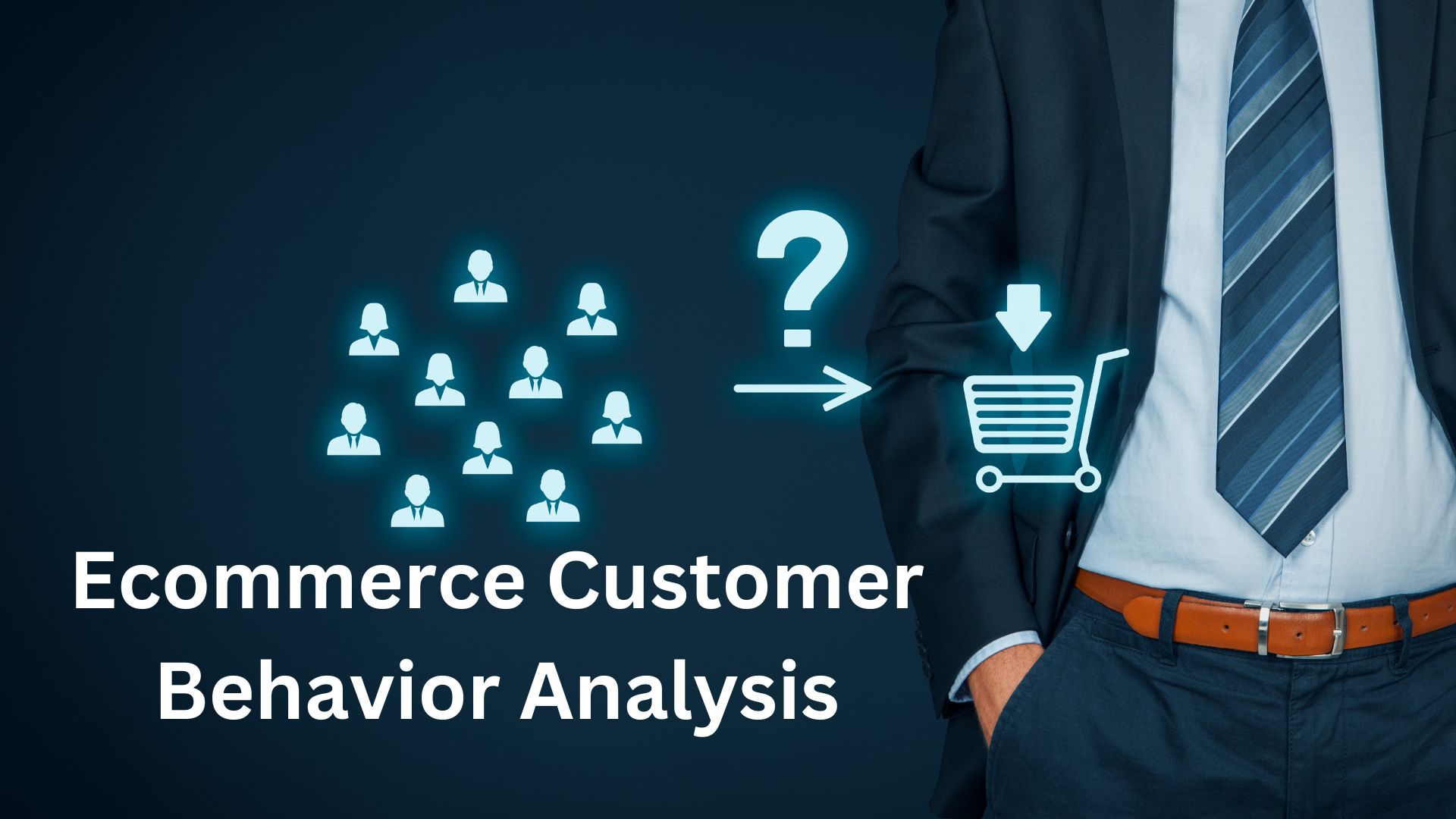Understanding ecommerce customer behavior is crucial for businesses to adapt their strategies, as it directly impacts sales and marketing efforts. Analyzing customer behavior helps businesses understand their preferences, purchase patterns, and decision-making processes, allowing for targeted marketing and optimized user experience.
Ecommerce customer behavior analysis is an essential aspect of understanding how consumers interact with online platforms to make informed purchasing decisions. By studying consumer behavior, businesses can gain valuable insights into their target audience’s preferences, needs, and shopping habits. This data allows for strategic marketing campaigns, personalized product recommendations, and improved website navigation, ultimately leading to increased sales and customer satisfaction.
With the use of advanced analytics tools and data-driven insights, businesses can effectively predict and influence customer behavior, ultimately driving growth and success in the competitive ecommerce landscape.
Introduction: Understanding Ecommerce Customer Behavior
Understanding ecommerce customer behavior is pivotal in creating successful marketing strategies and improving customer retention. By analyzing consumer behavior, ecommerce businesses gain valuable insights into customer preferences, decision-making processes, and purchasing patterns. This knowledge enables businesses to tailor their offerings and enhance the overall customer experience, ultimately leading to increased conversions and loyalty. In this article, we will delve into the intricacies of consumer behavior in ecommerce and highlight the different types of consumer behavior that shape the digital marketplace.
What Is Consumer Behavior In Ecommerce?
Consumer behavior in ecommerce refers to the actions and decision-making processes that individuals engage in when navigating and interacting with online retailers and digital platforms. It encompasses the various stages of the customer journey, including awareness, interest, consideration, and ultimately, the purchase decision. Online consumer behavior is influenced by an array of factors such as product availability, pricing, convenience, user experience, and social proof. Understanding these dynamics is fundamental for ecommerce businesses to effectively engage and convert potential customers.
Types Of Consumer Behavior
- Complex-buying behavior: This type of consumer behavior is characterized by extensive research and evaluation before making a purchase, often associated with high-involvement products.
- Dissonance-reducing buying behavior: Consumers exhibit this behavior when faced with post-purchase doubts, seeking reassurance that they made the right decision.
- Habitual buying behavior: In this scenario, customers make routine purchases with minimal consideration, often for low-cost and frequently consumed items.
- Variety-seeking buying behavior: Consumers displaying this behavior seek novelty and diversity in their purchasing decisions, often exploring new products and brands.
Predicting Customer Behavior
By utilizing data analysis and tracking, ecommerce businesses can effectively predict customer behavior. This involves collecting relevant data through surveys and purchase history, and using analysis tools to identify patterns and trends. Understanding customer behavior is crucial for businesses to make informed decisions and optimize their marketing strategies.
Importance Of Data Analysis And Tracking
Predicting customer behavior in ecommerce is crucial for businesses as it helps in understanding customer preferences and making informed decisions. The importance of data analysis and tracking cannot be overemphasized in this process.
Data analysis allows businesses to gain insights into customer behavior by examining patterns and trends in customer interactions and transactions. Tracking customer activities provides valuable information on their browsing behavior, product interests, and purchasing habits.
Steps To Predict Customer Behavior
There are essential steps to predict customer behavior in ecommerce, and these include:
- Collecting relevant data through surveys, online tracking, and purchase history
- Utilizing data analysis tools to identify patterns and trends
By following these steps, businesses can effectively analyze and predict customer behavior, ultimately leading to improved marketing strategies and customer satisfaction.
Analyzing Online Consumer Behavior
Understanding consumer behavior is crucial for ecommerce businesses seeking to optimize their marketing strategies and drive sales. By analyzing online consumer behavior, businesses can gain insights into customer preferences, motivations, and decision-making processes. This valuable information can then be used to tailor marketing campaigns, improve user experiences, and ultimately boost conversions. In this blog post, we will explore the key steps involved in analyzing online consumer behavior and how it can benefit your ecommerce business.
Defining Business Goals And Desired Outcomes
Before delving into consumer behavior analysis, it is essential to define your business goals and desired outcomes. This step involves identifying what you aim to achieve through your ecommerce efforts, such as increasing sales, improving customer loyalty, or expanding market reach. By clearly defining your goals, you can align your customer behavior analysis efforts to deliver actionable insights that directly contribute to your business success.
Identifying Key Audience Segments
Once you have defined your business goals, the next step is to identify key audience segments. Understanding your target audience is crucial for effective consumer behavior analysis, as different customer segments may exhibit varying behaviors and preferences. By segmenting your audience based on demographics, interests, and buying behaviors, you can tailor your analysis to gain more accurate insights and develop targeted marketing strategies.
Mapping Critical Paths Along The Customer Journey
Mapping critical paths along the customer journey involves visualizing the various touchpoints and interactions that customers have with your ecommerce website. This step helps you understand the series of steps customers go through, from initial awareness to final purchase. By identifying critical touchpoints, such as product pages, checkout process, and customer support, you can focus your analysis on these key areas to uncover opportunities for improvement and optimization.
Determining Data Sources
Once you have defined your goals, identified your audience segments, and mapped the customer journey, the next step is to determine the data sources you will use for your analysis. This can include a combination of first-party data, such as website analytics, customer surveys, and purchase history, as well as third-party data from market research and industry reports. By considering a diverse range of data sources, you can gain a comprehensive view of your customers’ behaviors and preferences.
Conducting Analysis
With your data sources in place, it is time to conduct the analysis. This involves applying various analytical techniques and tools to interpret the data and draw meaningful insights. Whether you are using data visualization, cohort analysis, or machine learning algorithms, the goal is to identify patterns, trends, and correlations that shed light on customer behavior. Through rigorous analysis, you can uncover actionable insights that can inform your marketing strategies and drive business growth.
Applying Findings
Once you have obtained valuable insights from your analysis, the next step is to apply these findings in your marketing efforts. This can involve making changes to your website layout, optimizing product descriptions, personalizing marketing messages, or enhancing the overall user experience. By applying the insights gained from consumer behavior analysis, you can better align your marketing strategies with customer preferences and expectations, leading to improved engagement and conversions.
Measuring And Iterating
Consumer behavior analysis is an ongoing process that requires continuous measurement and iteration. It is important to establish key performance indicators (KPIs) to track the impact of your optimizations and monitor changes in customer behavior. By regularly measuring the effectiveness of your strategies and iterating based on the results, you can ensure that your ecommerce business remains responsive to evolving consumer preferences and maintains a competitive edge in the market.

Credit: fastercapital.com
Customer Behavior Analysis: Benefits And Methods
Analyzing ecommerce customer behavior provides valuable insights for businesses to enhance user experience, improve marketing strategies, and boost sales. Methods include data tracking, surveys, and purchase history analysis. By understanding customer behavior, businesses can effectively predict and meet consumer needs, optimize business goals, and tailor their approach to specific audience segments.
Understanding The Importance Of Customer Behavior Analysis
Understanding customer behavior is crucial for any ecommerce business. By analyzing how customers interact with your website, products, and overall online presence, you can gain valuable insights into their preferences, needs, and buying habits. customer behavior analysis enables you to make informed decisions about marketing strategies, product development, and customer service improvements. It allows you to tailor your offerings to meet the specific needs and expectations of your target audience, ultimately leading to increased sales and customer satisfaction.
Conducting Customer Behavior Analysis
To conduct effective customer behavior analysis, you need to collect and analyze relevant data. This can be done in several ways, such as:
- Collecting data through surveys, online tracking, and purchase history
- Utilizing data analysis tools to identify patterns and trends
- Defining business goals and desired outcomes
- Identifying key audience segments
- Mapping out critical paths along the customer journey
- Determining data sources
- Conducting thorough analysis
- Applying findings
- Measuring and iterating
Utilizing Customer Behavior Analysis Tools
There are several customer behavior analysis tools available that can streamline and enhance the analysis process. These tools provide valuable insights into customer behavior, allowing you to make data-driven decisions. Some popular customer behavior analysis tools include:
| Tool | Description |
|---|---|
| Google Analytics | A comprehensive analytics platform that provides detailed data on website traffic, user behavior, and conversion rates. |
| Woopra | An analytics platform that tracks and analyzes customer behavior in real-time across multiple channels. |
| Mixpanel | A user analytics platform that focuses on tracking and analyzing user interactions with digital products. |
| FullStory | A session replay and analytics tool that allows you to see how users interact with your website. |
| Amplitude | An advanced analytics platform that helps you understand user behavior and optimize product experiences. |
| CleverTap | A comprehensive customer engagement and retention platform that provides insights into user behavior and enables personalized messaging. |
By utilizing these tools, you can gather comprehensive data, visualize key metrics, and gain a deeper understanding of your customers’ behavior. This information empowers you to make data-driven decisions and optimize your ecommerce business for success.
Improving Ecommerce Experience With Consumer Behavior Analytics
Ecommerce has revolutionized the way businesses operate, allowing them to reach a wider audience and cater to their needs more effectively. However, in order to truly optimize the ecommerce experience and meet customer expectations, businesses need to understand consumer behavior on a deeper level. This is where consumer behavior analytics comes into play.
Extracting Deeper Consumer Insights Through Behavioral Data Analysis
Behavioral data analysis is a powerful tool that allows businesses to gain valuable insights into consumer preferences, habits, and decision-making processes. By analyzing data collected from various sources – including website interactions, purchasing patterns, and social media engagement – businesses can uncover key trends and patterns that inform their marketing and sales strategies.
Personalizing Website Experiences
One of the key benefits of consumer behavior analytics is the ability to create personalized website experiences for each individual user. By leveraging data insights, businesses can tailor their website content, product recommendations, and promotions to align with the unique preferences and interests of their customers. This level of personalization not only enhances the user experience but also boosts customer satisfaction and increases conversion rates.
Measuring Consumer Behavior Analytics For Ecommerce
Measuring consumer behavior analytics is essential for businesses to understand the effectiveness of their marketing strategies and website performance. By tracking key metrics such as conversion rates, bounce rates, and session durations, businesses can identify areas for improvement and optimize their ecommerce platforms accordingly. This data-driven approach enables businesses to make informed decisions and allocate resources more efficiently, ultimately driving growth and revenue.
Improving User Experience And Identifying Pain Points
Through consumer behavior analytics, businesses can gain valuable insights into user behavior and identify pain points within the ecommerce journey. By understanding how users navigate their websites, where they encounter obstacles, and what triggers them to make a purchase, businesses can make necessary improvements to enhance the user experience. This proactive approach not only increases customer satisfaction but also helps eliminate barriers to conversion, driving higher sales and customer retention rates.

Credit: twitter.com

Credit: neilpatel.com
Frequently Asked Questions Of Ecommerce Customer Behavior Analysis
What Is Consumer Behavior In Ecommerce?
Consumer behavior in ecommerce refers to the decision-making process of shoppers when purchasing products online. It encompasses identifying needs, problem-solving, and evolving expectations. Analyzing online consumer behavior involves data collection, tracking, and using tools to understand patterns and trends for predicting customer actions.
What Are The 4 Types Of Customer Behaviours?
The four types of customer behaviors in e-commerce are complex-buying behavior, dissonance-reducing buying behavior, habitual buying behavior, and variety-seeking buying behavior. These behaviors reflect how consumers make purchasing decisions based on their evolving expectations and needs. By analyzing data and tracking, businesses can predict and understand customer behavior to personalize the website experience.
How Do We Predict Customer Behavior By Analyzing E-commerce?
To predict customer behavior by analyzing e-commerce, you need to collect relevant data through surveys, online tracking, and purchase history. Then, utilize data analysis tools to identify patterns and trends.
How Do You Analyze Online Consumer Behaviour?
To analyze online consumer behavior, follow these steps: 1. Define business goals and desired outcomes. 2. Identify key audience segments. 3. Map critical paths along the customer journey. 4. Determine data sources. 5. Conduct analysis. 6. Apply findings. 7. Measure and iterate for improvement.
Conclusion
Understanding customer behavior in ecommerce is crucial for businesses to thrive in the digital age. By analyzing data and tracking consumer patterns, businesses can gain valuable insights into their customers’ preferences and expectations. This allows them to optimize their marketing strategies, improve customer satisfaction, and drive sales.
With the help of advanced tools and techniques, businesses can predict and anticipate customer behavior, making informed decisions to meet their customers’ needs. By leveraging customer behavior analysis, businesses can stay ahead of the competition and create personalized experiences that resonate with their target audience.
Start analyzing customer behavior today to unlock the full potential of your ecommerce business.

Olga L. Weaver is a distinguished figure in both the realms of real estate and business, embodying a unique blend of expertise in these interconnected domains. With a comprehensive background in real estate development and a strategic understanding of business operations, Olga L. Weaver has positioned herself as a trusted advisor in the complex intersection of property and commerce. Her career is marked by successful ventures in real estate, coupled with a keen ability to integrate sound business principles into property investments. Whether navigating the intricacies of commercial transactions, optimizing property portfolios, or providing strategic insights into market trends, Olga L. Weaver’s expertise encompasses a wide spectrum of both real estate and business-related topics. As a dual expert in real estate and business, she stands as a guiding force, empowering individuals and organizations with the knowledge and strategies needed to thrive in these intertwined landscapes. Olga L. Weaver’s contributions continue to shape the dialogue around the synergy between real estate and business, making her a respected authority in both fields.


